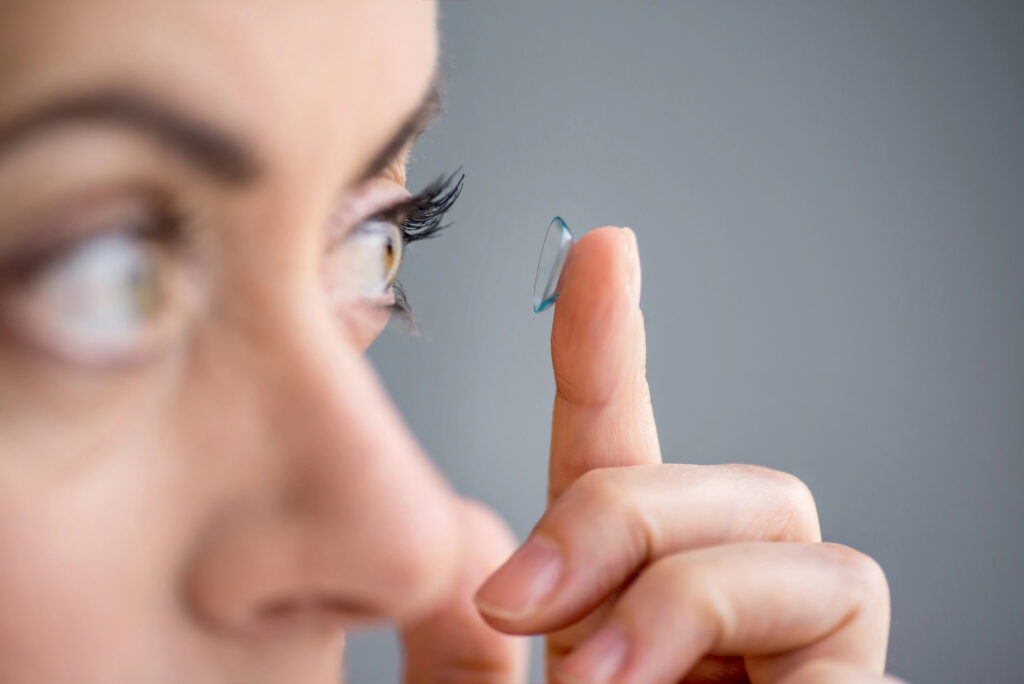Microbial keratitis—one of the most serious potential complications for contact lens wearers—is an infection of the cornea caused by bacteria, most commonly Pseudomonas aeruginosa. There are up to 3.5 million reports of corneal infections annually, and in extreme cases, it can result in permanent eye damage and vision loss. The risk of microbial keratitis doubles when someone wears contact lenses overnight and/or for longer periods of time than is generally advised.
Previous studies have found that existing solutions used to disinfect contact lenses are not effective at preventing clusters of bacteria that attach to the surface of lenses, known as biofilm. For that reason, researchers have been looking for a more effective disinfectant that can kill clusters of Pseudomonas aeruginosa and prevent corneal infection.
And now, a team of scientists from the University of Portsmouth in England and Naresuan and Pibulsongkram Rajabhat universities in Thailand believes they have found one. Their research was published in the January 2024 issue of the journal Antibiotics.
The Study
Hydroquinine, an organic compound found in the bark of some trees, was previously known to have antibacterial activity against Pseudomonas aeruginosa and several other clinically important germs, including Staphylococcus aureus, Escherichia coli, and Klebsiella pneumoniae. For that reason, the research team decided to examine the antibacterial, anti-adhesion, and anti-biofilm properties of hydroquinine-formulated multi-purpose solutions (MPSs) and then compare it to two commercial MPSs—Opti-free Replenish and Q-eye.
To test the efficacy of hydroquinine, the researchers performed several in vitro tests on drug-sensitive P. aeruginosa that was treated with and without hydroquinine. After analyzing the treated bacteria’s DNA, the researchers concluded that hydroquinine inhibited P. aeruginosa growth by decreasing expression levels of genes related to adhesion. Further in vitro tests also showed that hydroquinine was as effective as the commercially available MPSs, killing 99.99% of P. aeruginosa at 6- and 24-hour contact times.
The researchers then tested the disinfectant efficacy of the three solutions on soft contact lenses made of polymacon. The lenses were infected with P. aeruginosa, and following a contact time of 5 min, were treated with the three solutions and enclosed in their cases for the manufacturer’s recommended disinfection time (6 hours). Hydroquinine showed significant anti-adhesion efficacy (greater than 50%), as well as the expected antibacterial disinfectant efficacy. What’s more, hydroquinine was also effective against biofilm, breaking down and dispersing biofilm mass that had been allowed to build up on contact lenses.
The researchers also performed the same tests after combining hydroquinine with each of the commercially available MSPs, and the results showed that the combination products worked even better than MSPs or hydroquinine alone.
“Our initial findings suggest that soaking contact lenses in a multi-purpose solution containing hydroquinine is possibly helpful to prevent contamination and infection,” said lead author Sattaporn Weawsiangsang of Naresuan University.
Conclusions
These results are just the tip of the iceberg, said Weawsiangsang, noting that hydroquinine’s potential to prevent infection is only just being realized. “We are continuing to test the compound on a number of cells, and so far, the results are really promising. This potential development could contribute to the creation of new disinfectants from natural products, effectively combating P. aeruginosa infections and reducing cases of corneal infections.”
Weawsiangsang and her team recommend further research to examine the effectiveness of hydroquinine with several different contact lens materials, and against other pathogenic microorganisms.






